Back in the 1960’s most school kids collected stamps. Stamp collecting was one of the commonest hobbies and enjoyed equally by both boys and girls. Stamps were in ready supply as mail volumes were enormous and most homes would receive post with stamps affixed on a daily basis. Clipping and soaking these stamps was an exciting part of the joy of stamp collecting.
Fast forward to the 21st century and mail volumes have dropped considerably. The advent of email and the internet mean that far fewer letters are sent these days, and even fewer of these with a stamp affixed. Most mail arriving in the average household will be franked or pre paid mail which is of little interest to anyone. To illustrate the point, when was the last time you saved the envelope your bank statement came in (if you even got a printed bank statement)? Exactly, they are dull and have no stamp on them so why keep them?
With fewer stamps available, there are fewer children collecting them, and as a consequence the only stamp collections in most households are inherited collections, which are a mystery to most people.
What to do with an inherited stamp collection?
Most of the day to day enquiries received by stamp dealers, philatelic societies and stamp websites like this one are with questions about inherited collections. If you’ve been fortunate enough to find ‘grandad’s old stamp album’ and are wondering if it’s worth anything, here are a few pointers that might help.
Whilst this article will focus specifically on Barbados Stamps, the principles here apply to most other countries and stamp collections.
Are 100 year old Barbados Stamps worth anything?
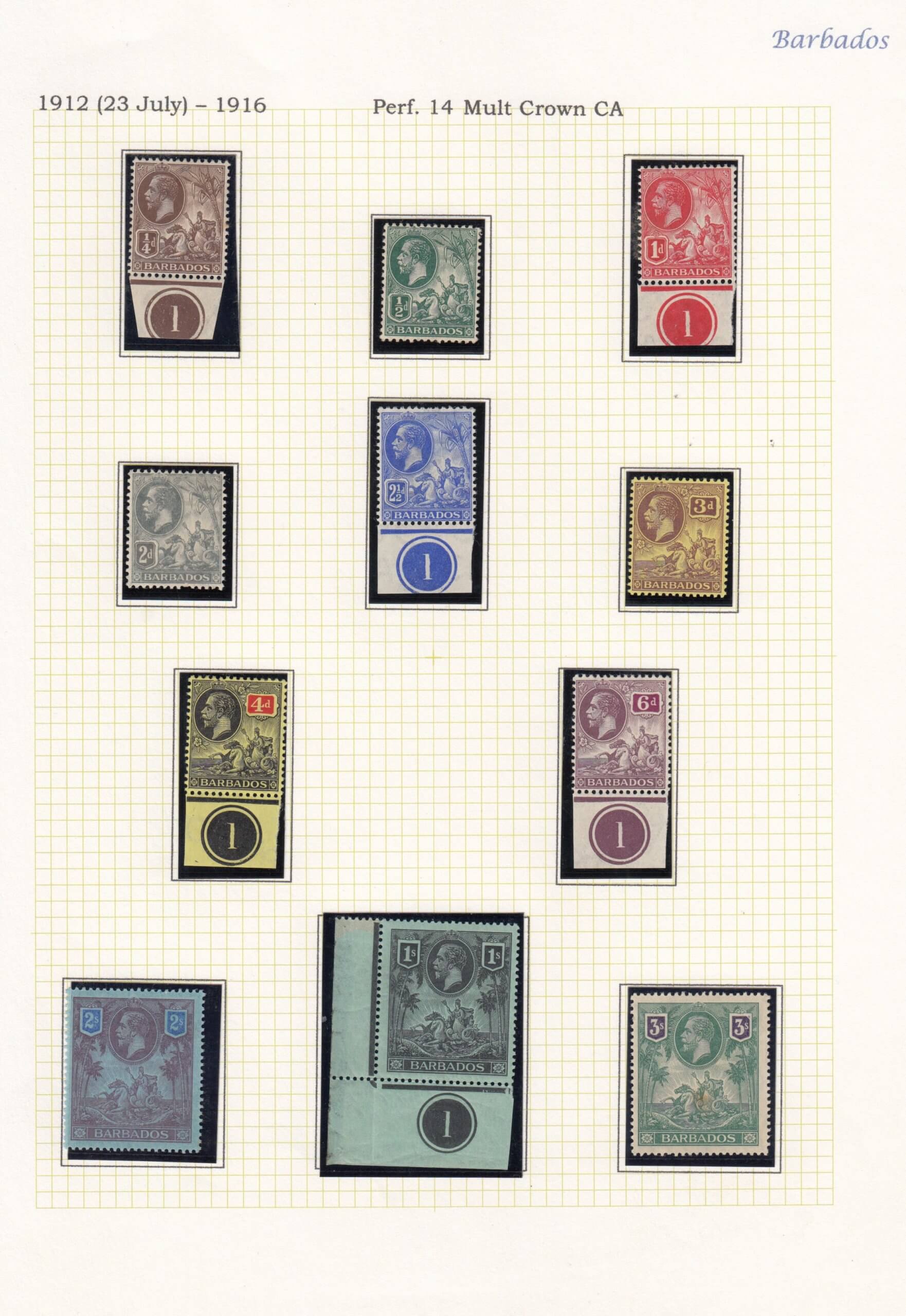
The real answer to this question is, it depends. Stamp values are determined by a range of factors including:
- Stamp condition
- Perforations
- Whether it is mint or used
- The cancellation
- Rarity
For most stamp collectors, condition is everything. Speak to any stamp dealer and they will quickly tell you that no matter how old your collection, if it’s in poor shape it’s pretty much worthless.
Common issues with older stamps include:
- Part of the stamp missing
- Perforations missing or damaged
- Rips or tears
- The stamp is thinned (it has part of the back missing)
- There is ‘foxing’ or ‘rust’ on the stamp or the stamp is toned
Here’s some examples of these problems.
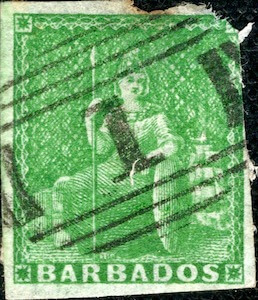
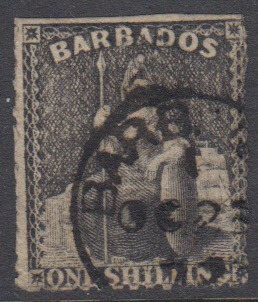
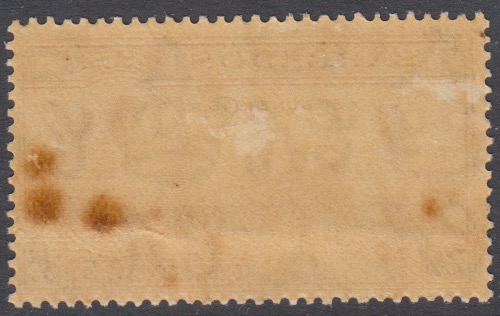

Let’s assume that the collection you have found has a page of Barbados stamps in it and that they look to be in good condition. The next step is to ascertain whether this is a collection or an accumulation. The difference here is crucial as it will inform you as to whether everything else you find is any good.
A collection is typically one that contains full sets of stamps, neatly set out on a page and often with either written or pre printed details telling you what is on that page, as you can see in the earlier image with the page of Barbados 1912-16 stamps.
An accumulation is a range of stamps arranged on a page with no particular order and often no details to let you know what you are looking at. Sometimes, they are on neat country pages, so there is some semblance of order, but typically the pages are sparse and almost always, the highest value stamps in a set are missing.
Most inherited stamp collections were put together when your parents or grandparents were either a schoolboy or schoolgirl, and then forgotten about for many years. If this is the case then it is likely that you have inherited an accumulation rather than a collection.
As a rule of thumb, if good money has been spent on stamps then it will be a collection; if it’s whatever arrived in the post, it is probably an accumulation.
So, back to the original question, if you find 100 year old stamps in an old stamp album they are not necessarily rare or worth anything. Often, people find a penny black and assume they have found a fortune, but when you understand that there were almost 69,000,000 penny black stamps printed between 1840 and 1841 you can see that they are not that rare.
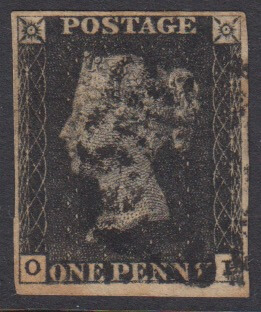
If the album contains mostly older stamps i.e., anything before the reign of QEII then it’s probably worth getting it checked by a reputable stamp dealer.
Are old cancelled Barbados stamps worth anything?
Absolutely. A cancelation is the mark that was made on the stamp to indicate that it had been used, and lots of collectors are interested in postal history and postmarks. Collectors of postmarks are called ‘marcophilatelists’ and they value and view stamps slightly differently.
As an example, this is a very common stamp.
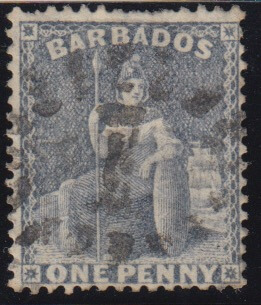
It is a Barbados 1d stamp issued in 1875 and in the current Stanley Gibbons catalogue it is valued at £2. Most people looking at this (including many dealers) would estimate its worth as a fraction of that price. Dealers often sell stamps at 40% of the catalogue value, which in this case would mean it’s worth 40p.
You’d be surprised therefore if I told you that I would happily pay ten times that amount for this stamp. In fact, I’d pay £20 for this stamp.
Why? The answer is that the postmark (cancellation) on this stamp is what is known as a parish bootheel and parish number one is St Michael which is where the G.P.O. in Bridgetown is situated. It’s the most common cancel on many early Barbados Stamps, but it shouldn’t exist on this one. This particular bootheel was superseded some years earlier by different cancellers in the busiest post office on the island, so this cancel is incredibly scarce.
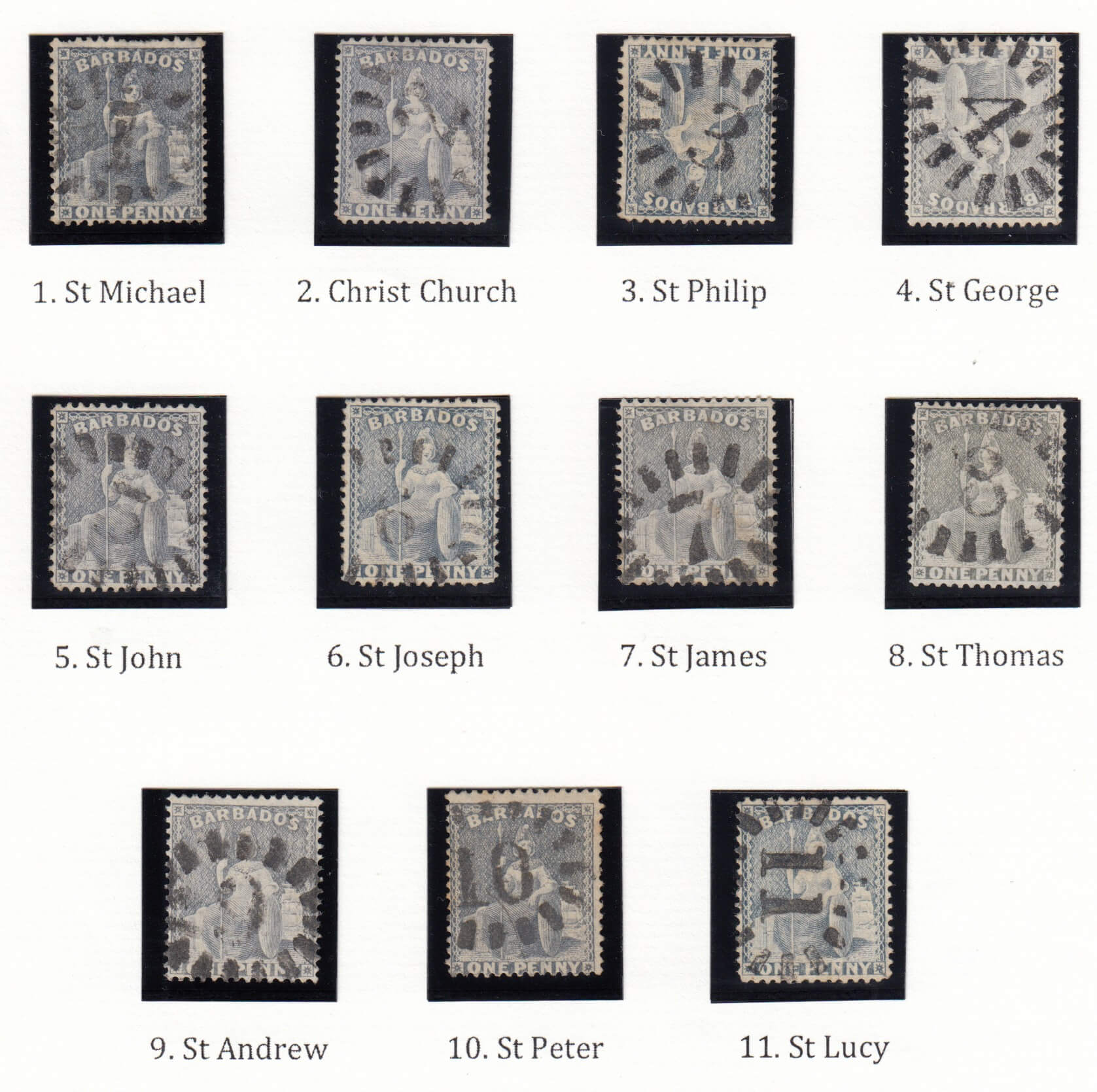
As with the advice given earlier, condition is everything, but postmark collectors may often buy slightly imperfect stamps if it carries a rare postmark.
Which old stamps are collectors looking for?
In respect of Barbados Stamps, the rarest are typically anomalies; stamps which for one reason or another are slightly out of the ordinary.
Most of the Barbados stamps issued are readily available, from the first issues in 1852 up to present day, but errors, oddities or stamps used in unusual situations are very rare.
As an example, currently the most expensive Barbados stamp is the one shilling error of colour (SG34a).
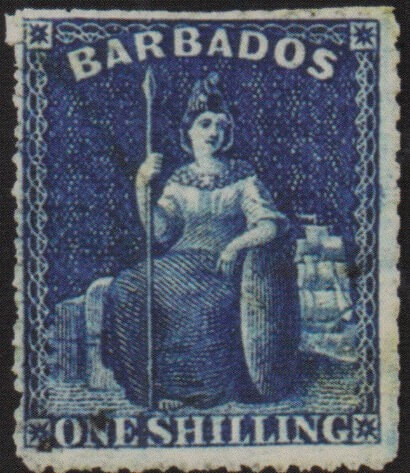
Printed in 1863 this stamp was supposed to be black but as you can see the stamp shown is blue. This happened because of an error at the printer which, when recognised, was remedied by recalling the stamps and destroying them. Not all of them made it to the incinerator however, and this stamp is exceedingly rare.
Similarly, in 2020 a dealer was lucky enough to find an extraordinary rare Barbados stamp in a collection he bought, and I wrote an article about it in December of that year. His find means that five of the six stamps have now been located, but there’s still one missing so you never know!
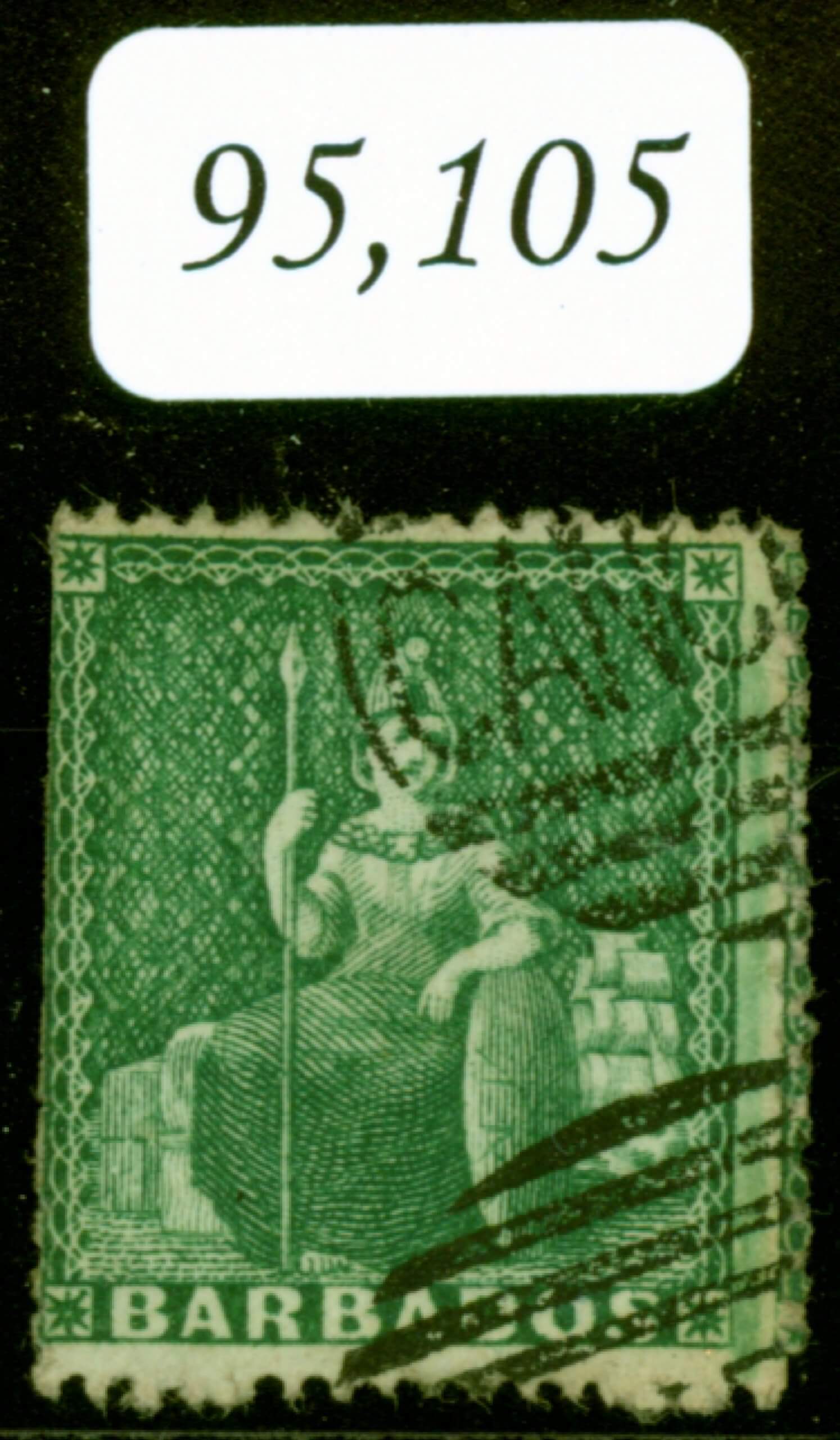
Other than the absolute rarities, most collectors are looking for the higher value stamps of a set. As an example, this set from the 1880s is fairly easy to find in mint condition, but the higher value 5/- (five shilling) stamp is very hard to find in fine used condition. It’s even harder to find with a parish bootheel or cancel on, and as such these stamps typically command a much higher price than others in the set, with this one currently being between £80 and £125, but much higher if it has a rare postmark.
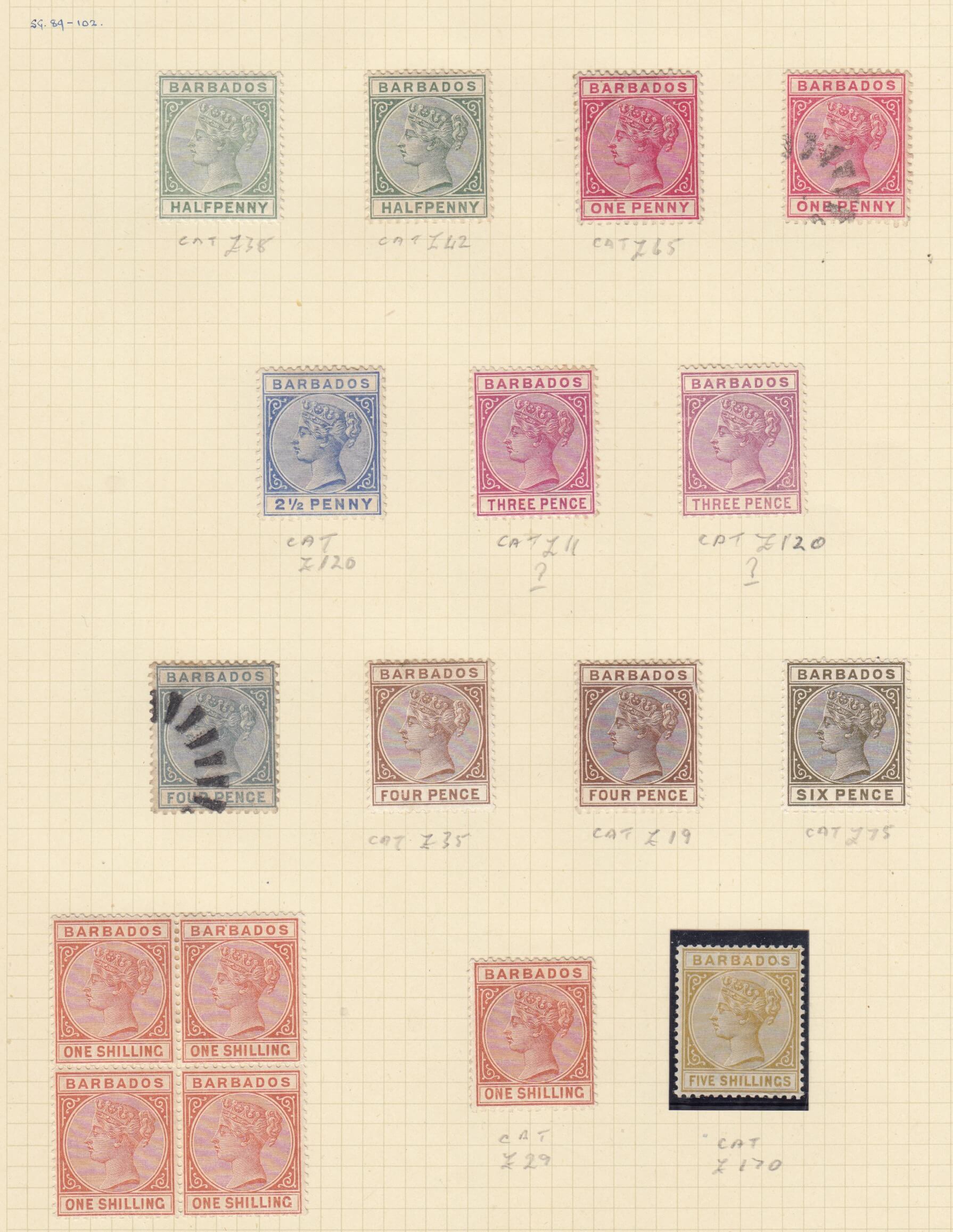
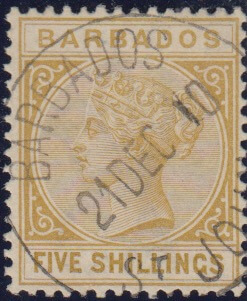
Are modern Barbados Stamps worth anything?
Modern Barbados Stamps are really collectible, but finding them can be a lot harder than you might think. Unless you live on the island and have easy access to incoming mail (such as working in the finance department of a utilities provider) then getting hold of a range of modern stamps is quite tricky.
In my experience, modern Barbados Stamps are quite easy to find up until the early 2000s, after which it becomes harder to acquire them. Whilst this hasn’t yet translated to the catalogue value, I expect used Barbados Stamps from the period from 2005 onwards to become future collectibles.
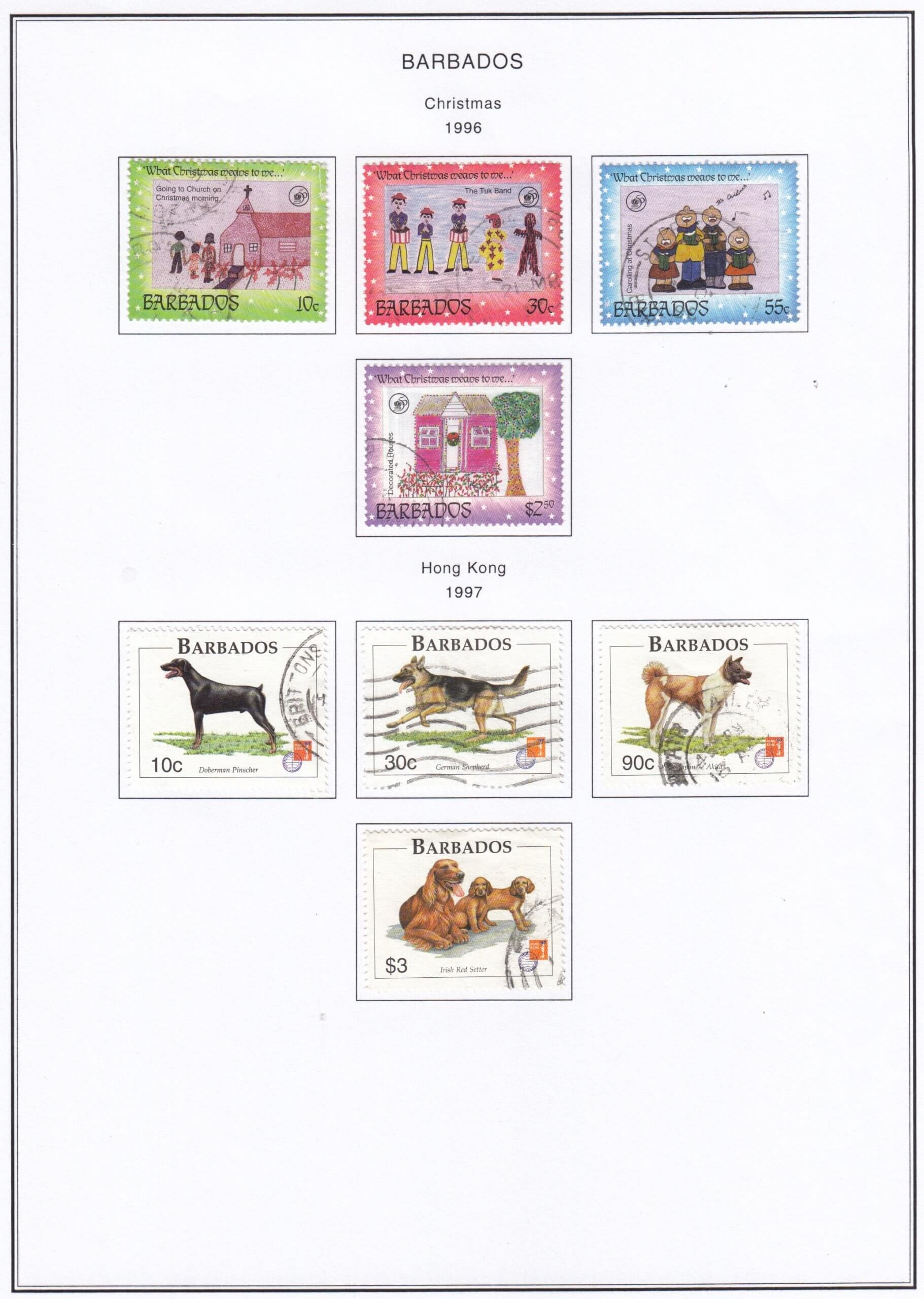
I’ve found some stamps on an envelope, should I cut them off?
Absolutely not. Not until you know what you are separating. Here are two practical examples which should help you to understand the importance of keeping stamps on the envelopes (covers), certainly from a value point of view.
This is an early Barbados stamp which was issued in 1855 and which, in used condition is normally worth between £30-£40. If, however, you have this stamp on the original envelope then it is worth hundreds or, in some cases, thousands of pounds.
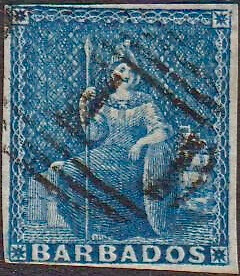
As a case in point, as I am writing this guide, this cover is available for sale on the Internet for £300. It’s the same stamp, just attached to the original letter.
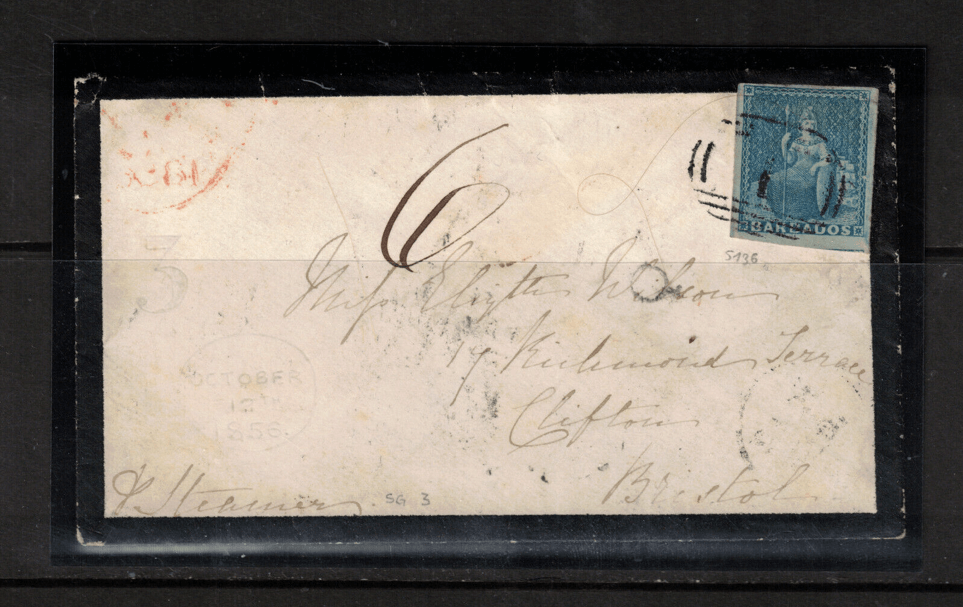
Similarly, a couple of years ago my local philatelic society were gifted a box of loose stamps which we could sell to raise funds. At the bottom of the box was this cover, which was folded and in quite poor condition.
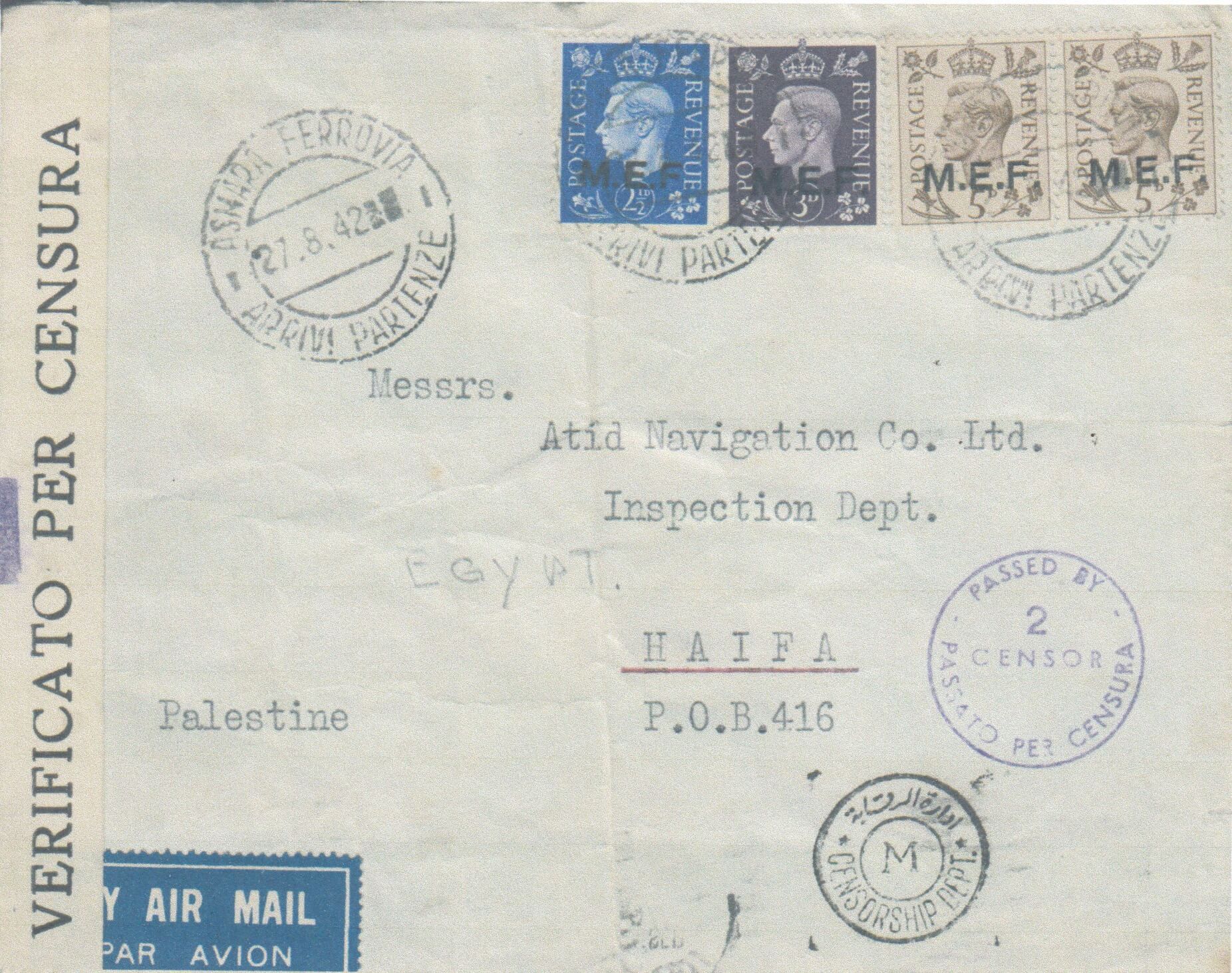
Despite this we decided to research it and eventually listed it on eBay, where it sold for over £200. A tatty old envelope at the bottom of a box was an essential piece of postal history to a specialist collector, so if you find old envelopes (typically pre 1960s) don’t be tempted to cut the stamps off the envelopes before checking with someone first.
What would make a stamp worthless?
Stamps are often ‘worthless’ if they are badly damaged, but this can also apply if they are common, or stamps produced specifically for the schoolboy/girl collectors market. As an example, here’s a page of very common stamps with were produced with a view to encouraging young collectors to add them to their albums. You’ll often see these stamps in a typical mixed album and it’s often an indicator that there is little or no value in the album.
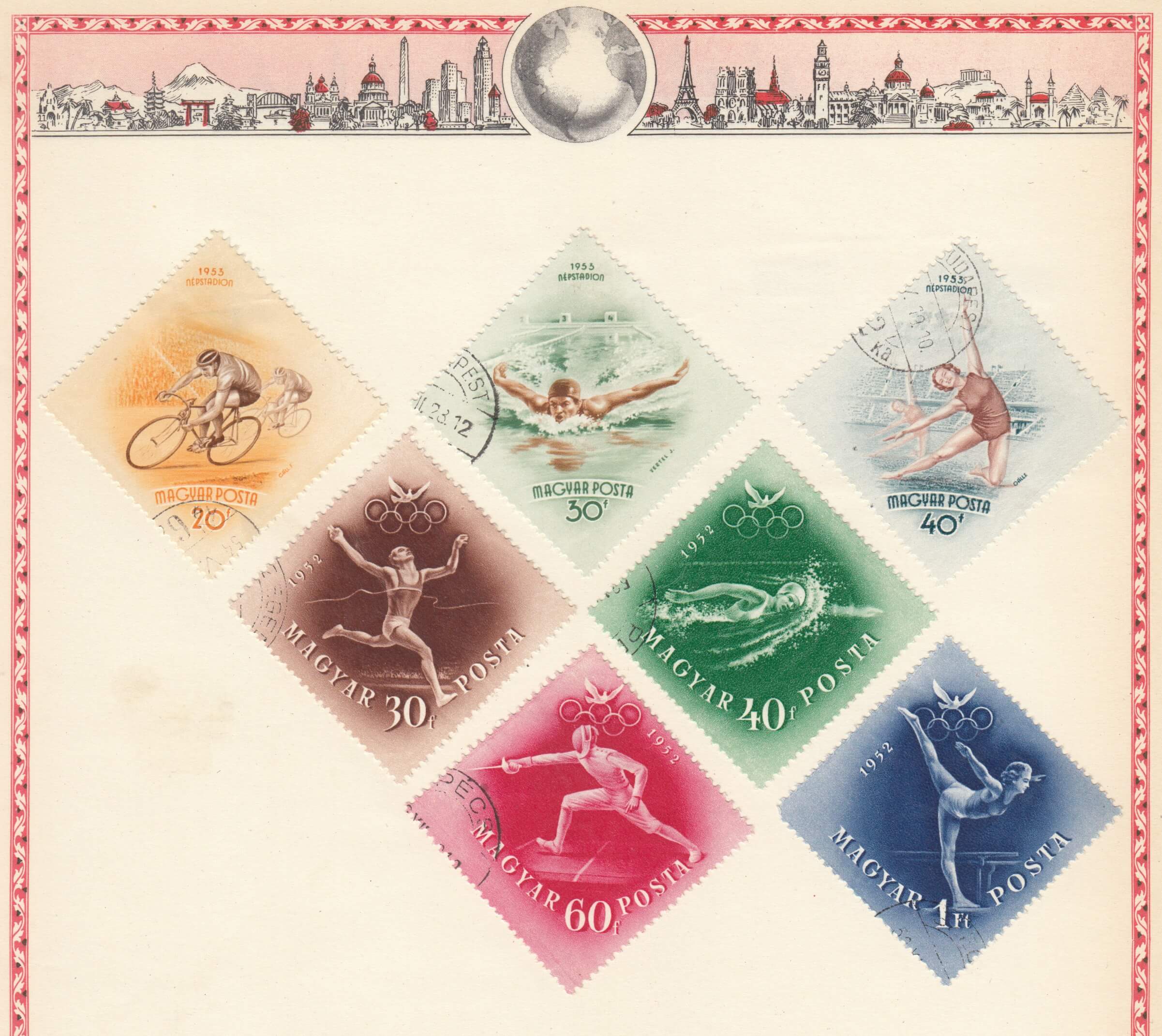
There are some exceptions, however, especially where the collector had a relative living in another country who sent back stamps for the collection. Sometimes you see average stamp albums in which there is a wonderful page of stamps from one of the African or Asian countries, specifically because the collector knew someone who lived there.
What to do with my stamps if they are worthless?
If you think your inherited collection is of little value then there are several options open to you. Most stamp dealers won’t want to make an offer to buy small accumulations of stamps but your local philatelic society will often accept them as a gift. There will be members of these societies who are able to use them in different ways. You can find a list of U.K. philatelic societies here, or you can just search online for ‘philatelic society’ or ‘stamp club’ near me.
Secondly, there is a wonderful voluntary organisation called Stamp Active who seek to promote stamp collecting amongst young people and always need material that they can give away to encourage new collectors.
Finally, you could give them to your local Oxfam shop as the volunteers there often accept stamps and stamp collections which can be sorted and sold, including selling them from their online shop.
Is it worth continuing the collection?
Sometimes we find that people who inherited a collection and having found out that it is worth something, (usually not a lot), decide to continue the collection. Once you get into the stamp collecting world you find that it opens up myriad possibilities, one of which is that you get a relatively low cost hobby that you can enjoy and that eventually, if it is a good collection, could form an asset to pass down through the family.
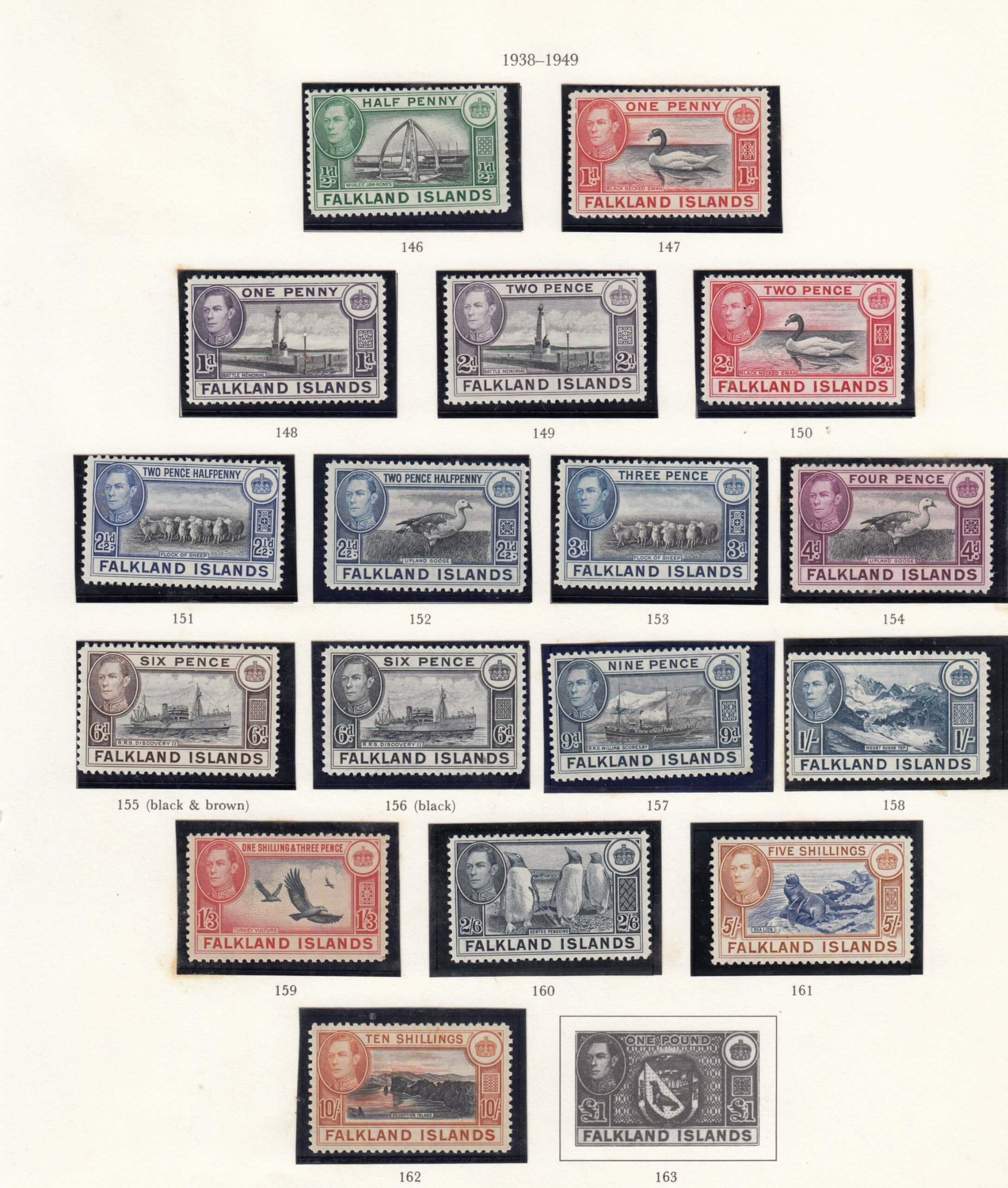
If you think that the collection you have is better than a typical school kids stamp album then your next step should be to speak to a professional stamp dealer about getting it appraised and from there, you can decide whether you want to sell it or continue it.
Should I get my stamp collection professionally appraised?
If it looks like this, it’s probably worth it.
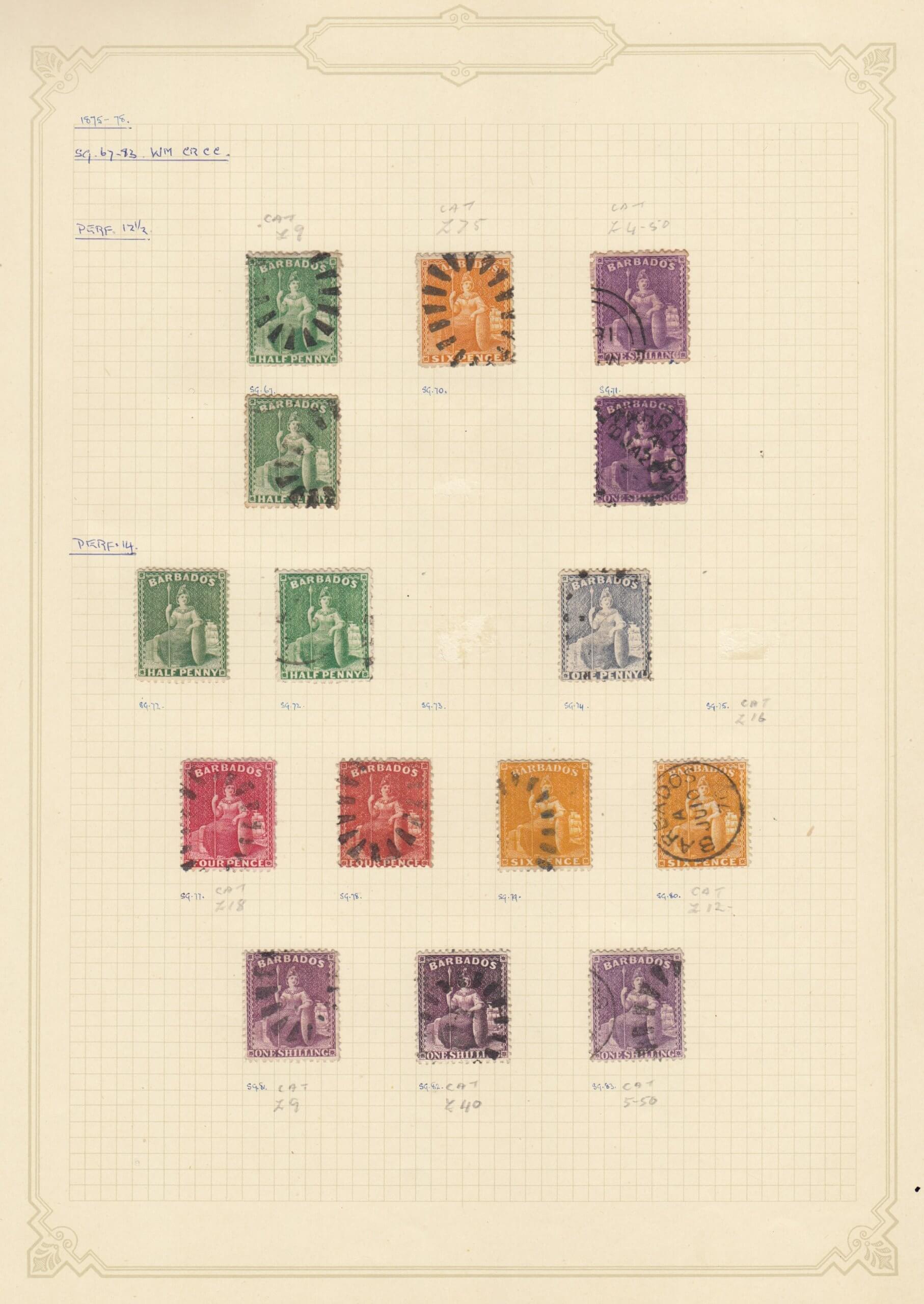
Not if it looks like this…
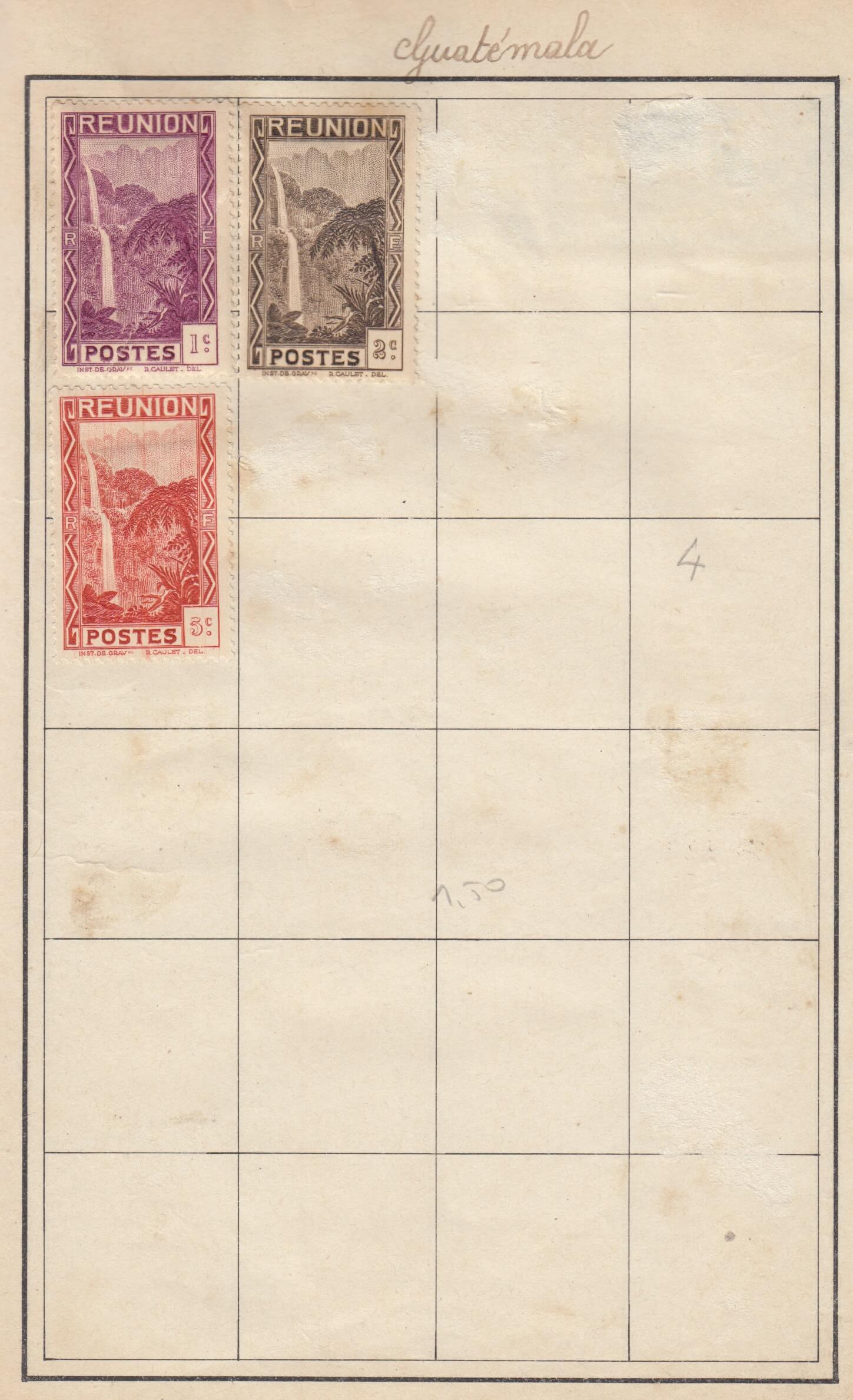
You can find a list of stamp dealers near you that are members of the Philatelic Traders Association on their website.
Conclusion
Stamp collecting is fun. Millions of people did it when they were growing up and whilst many gave up as they grew up, many more continued or return to the hobby later in life. There are therefore millions of stamp albums sitting undiscovered in lofts and garages, some of which will contain valuable or collectible stamps.
If you’ve found a collection, this guide should have pointed you to your next steps and whether that is a sale or you wish to continue collecting, I hope you’ve enjoyed the journey.
